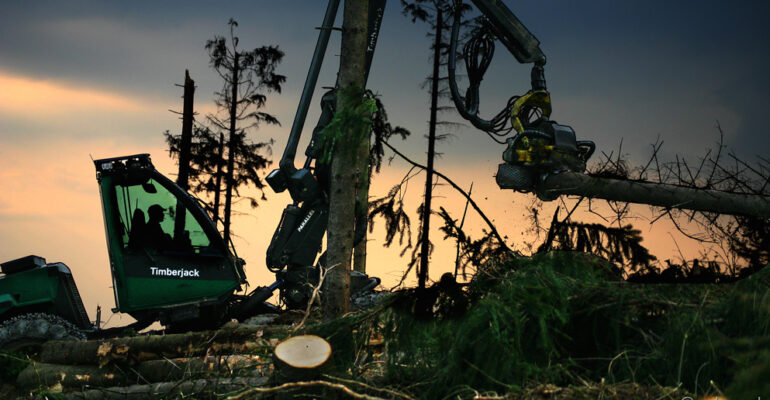It’s crunch time for the EU’s new bioenergy policy
By Sini Eräjää, Policy Officer EU Bioenergy, Birdlife Europe and the European Environmental Bureau
After many years of contemplation, the moment for the EU to decide on how to regulate bioenergy use is approaching. Today, the Commission is closing a public consultation for a new bioenergy sustainability policy and on 12th May will listen to what stakeholders have to say. A proposal for the new policy is expected by the end of the year.
Numerous civil society organizations have been calling for a policy like this for a long time. They’ve just reiterated their stance on bioenergy in the consultation itself (see for example what BirdLife Europe, Transport & Environment, Fern and Climate Action Network Europe have to say). Few will argue against the fact that bioenergy needs to be sustainable, but what this means exactly varies. So what are NGOs calling for in the new sustainability measures for bioenergy?
First, current policies at national and EU levels have not been enough to address all the negative impacts arising from growing bioenergy use. This has been recognized in the case of biofuels and the transport sector where it’s clear that renewable energy targets (currently, there’s a 10% target for 2020) should be scrapped because the target has only driven the use of unsustainable food based biofuels. These have been capped and limited until 2020, but it must be ensured that they are phased out entirely after 2020.
For the rest of bioenergy, a whole new set of policy measures are urgently needed because none exist. NGOs do recognize that there are positive opportunities and that bioenergy has a role to play in Europe’s energy mix, but the new policy must clearly separate the good from the bad. The bad includes biomass taken from food and energy crops grown on agricultural land and biomass taken directly from forests. Less risky are some bio-based industrial and municipal wastes, and to a limited extent agricultural and forestry residues. Sticking to these low environmental risk sources implies that sustainable biomass is limited by availability, so NGOs have called for a realistic cap on the total amount of bioenergy allowed in the renewable energy mix. NGOs also stress that the more sustainable bioenergy needs to be produced in an efficient way, i.e., producing both heat and electricity, rather than electricity only.
These key asks by NGOs highlight the fact that the sustainability challenges of bioenergy go beyond the existing challenges of sustainable forestry or agriculture. Major challenges like ensuring biomass use actually contributes to greenhouse gas savings and that the limited biomass resources available are used in a smart and resource efficient way cannot be solved through “sustainable forest management” or “sustainable agriculture”. Good raw wood material or crops too valuable to be burned directly should only be used in line with the cascading use principle.
On top of all this, emissions from carbon stock changes in nature arising from bioenergy use have been completely ignored. To ensure bioenergy use delivers promised greenhouse gas emission savings, the carbon losses or changes in forests, grasslands, wetlands and areas where biomass is harvested must be taken into account, as well as any indirect land use change impacts. The Commission is planning to propose new legislation to account for the emissions from land use and forestry, but it won’t be enough to ensure bioenergy use actually decreases overall emissions. First, accounting rules and targets for the land sector are globally inconsistent and allow ‘hiding’ of emissions arising from depletion of nature’s carbon stocks, especially in forests, as explained by the UK’s Chatham House. Second, as renewable energy policies and operators in the energy sector are the ones driving biomass demand for energy, it is sound policy making to address these drivers – rather than place the burden of emissions reductions on foresters and farmers.
Civil society has therefore largely rejected that new measures focus on sustainable forest management and accounting of emissions in the land sector as robust tools to guarantee sustainability. Instead, they are calling for direct measures which exclude biomass sources with high environmental, climate and social risks from receiving financial support from renewable energy policies. This implies that the starting point should be no further expansion in the use of agricultural land for energy production, no use of roundwood or stumps from forests, no use of biomass from protected areas and areas with high biodiversity value or carbon stocks, limits to the extraction of harvesting residues in forestry and agriculture, no growing of invasive alien species and minimum efficiency requirements in energy installations. However, they acknowledge that in some cases harvesting of biomass in protected areas or harvesting of whole trees can be done for biodiversity conservation purposes and are beneficial for the environment. These are nevertheless the exception rather than the rule.
By letting bioenergy play a role in the European energy mix and securing investments for sustainable bioenergy, the Commission now has a chance to set a clear direction for the new policy. Continuing to ignore the sustainability concerns put on the table, or addressing them in an insufficient way, will not provide the future direction bioenergy needs.
Banner photo: Wood harvesting (c) Andreas Beer, Flickr Creative Commons





